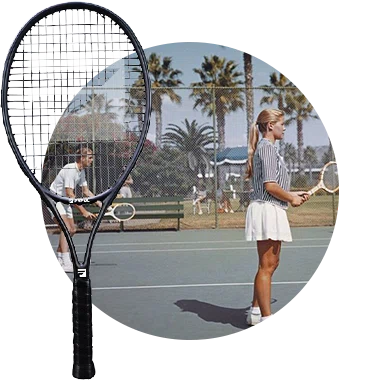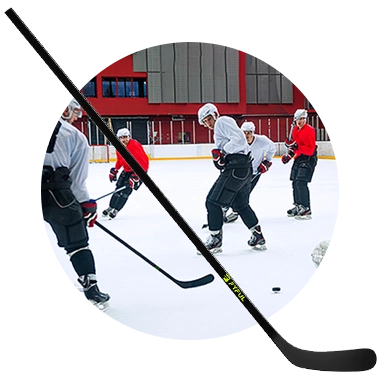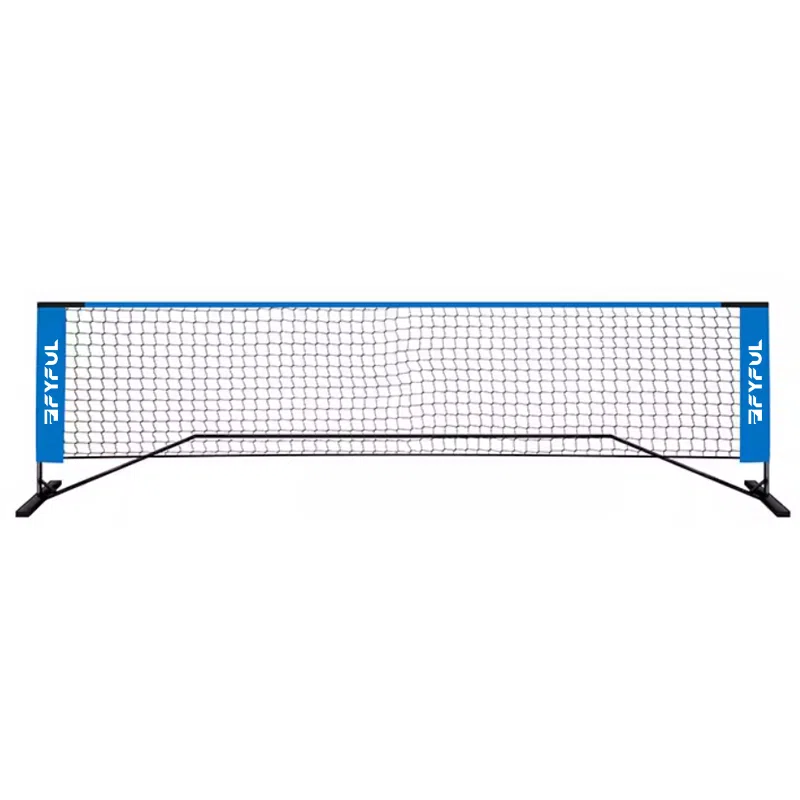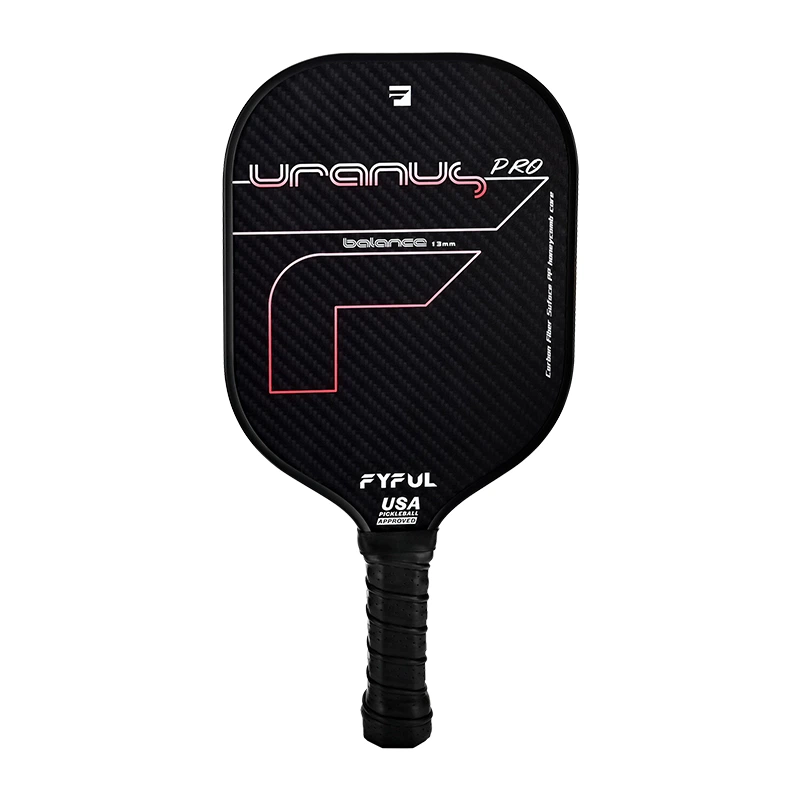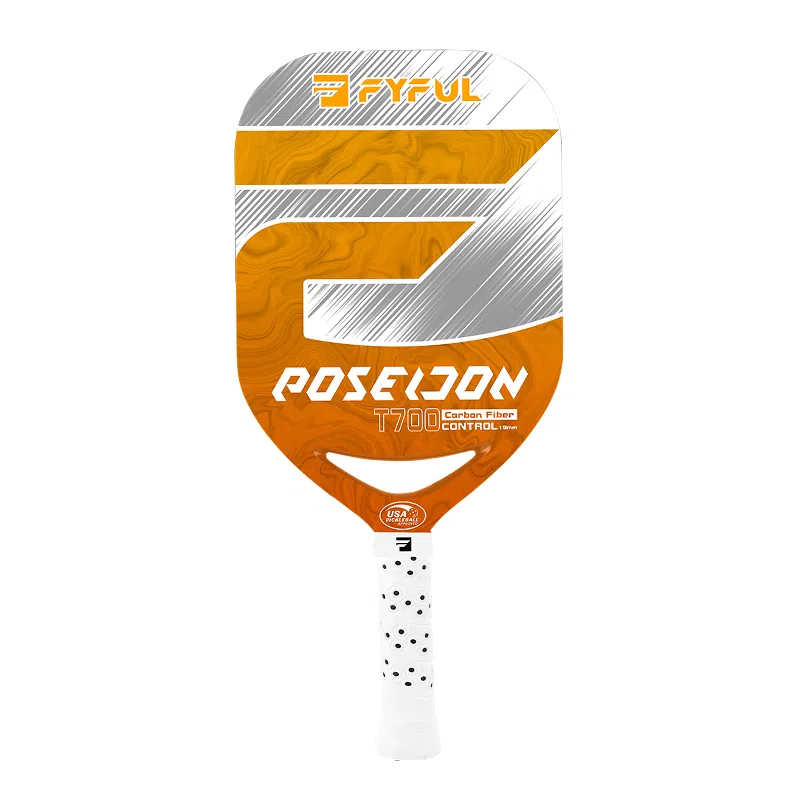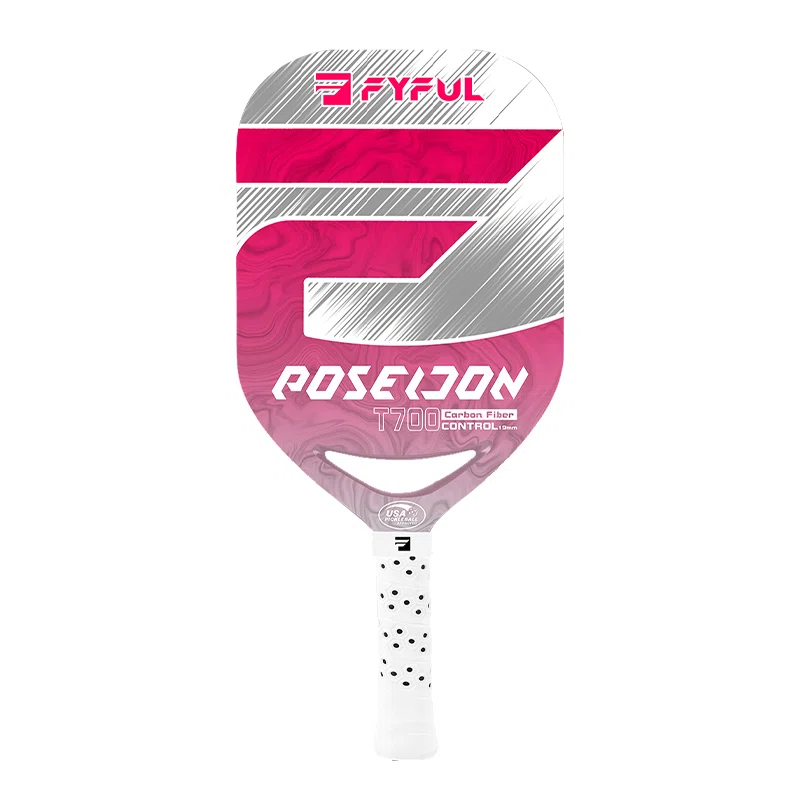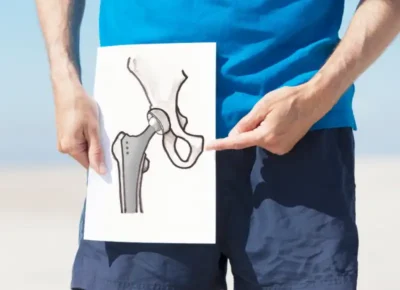When sourcing or customizing paddles, understanding the role of pickleball paddle weight is key for OEM buyers. Weight impacts not only player comfort and gameplay, but also production costs, material selection, and regional market preferences. Selecting the right weight range helps reduce return rates and improve customer satisfaction.
1. Why Pickleball Paddle Weight Matters
Pickleball paddles typically fall into three categories:
- Lightweight: under 7.3 oz
- Midweight: 7.3 – 8.4 oz
- Heavyweight: over 8.5 oz
Each category serves a different market. Lighter paddles suit younger players, seniors, and those seeking better maneuverability. Heavier paddles offer power and are favored by aggressive or advanced players. Most OEM orders focus on midweight as it appeals to a broader audience.
Choosing the correct pickleball paddle weight early in the sampling process can avoid cost revisions and misaligned positioning.
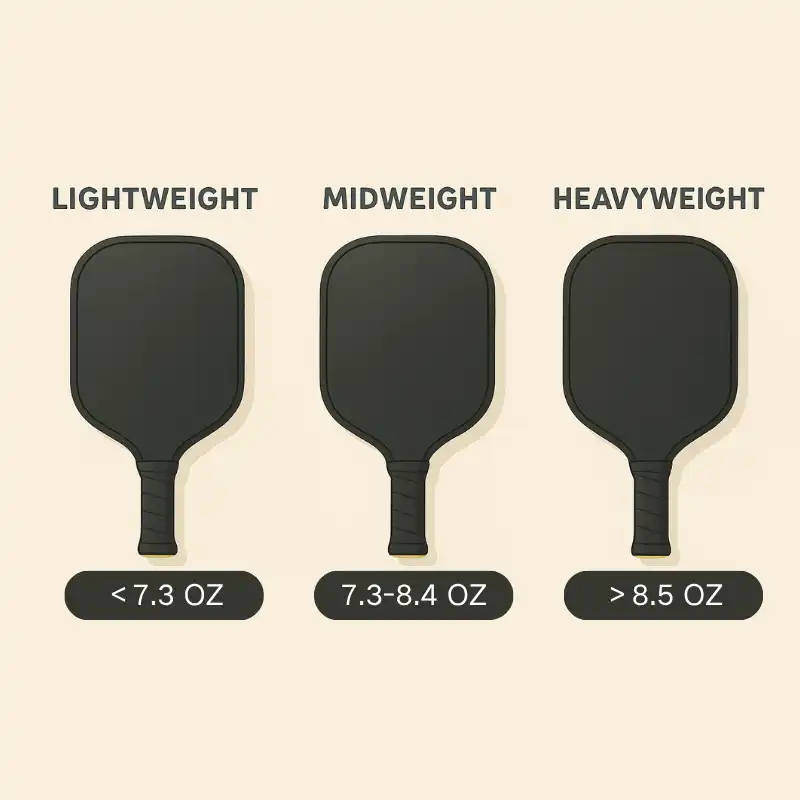
Pickleball paddle weight range
2 . What Affects Final Paddle Weight?
Several technical components influence paddle weight:
- Core thickness: 13mm cores are lighter, 16mm cores offer more control
- Face material: fiberglass adds weight, while carbon fiber reduces it
- Edge guard and grip tape also contribute up to 0.2 oz
For OEM buyers, aligning structural specs with desired pickleball paddle weight ensures performance consistency. Changes in materials can easily swing final paddle weight by 0.3–0.5 oz.

Factors that affect the weight of a pickleball paddle
3. Weight vs. Cost in Manufacturing
Light doesn’t always mean cheap. In many cases:
- Lighter paddles require stronger, more expensive core material
- Precision trimming and tighter QC are needed to meet tolerance
- Edge guards must be customized to fit slimmer profiles
Heavy paddles may reduce complexity but come with trade-offs in fatigue and control. Understanding how pickleball paddle weight affects BOM cost helps buyers better estimate margins.
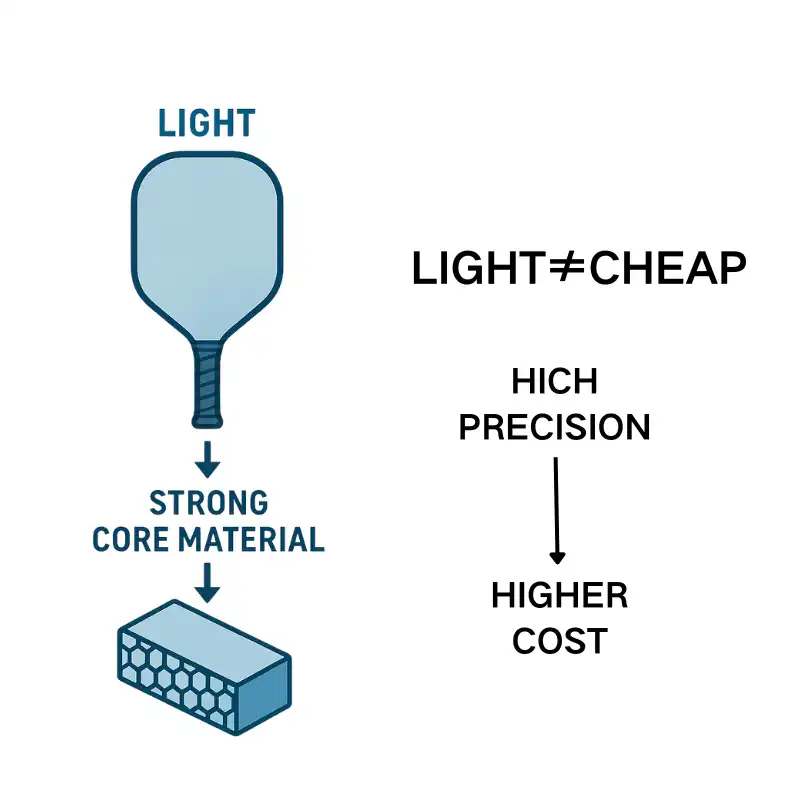
Weight vs. Cost in Manufacturing
4. Regional Preferences and Buyer Segments
Market expectations vary by region:
- North America: Midweight paddles (7.6 – 8.1 oz) dominate mass retail
- Southeast Asia: Lightweight paddles (<7.3 oz) are often preferred for speed and maneuverability
- Professional segments: Custom-weight options and balance-point tuning are in demand
This makes the pickleball paddle weight a strategic variable. A paddle brand targeting casual indoor players in Southeast Asia might prioritize a 7.1 oz design. In comparison, a U.S. tournament-focused brand could emphasize an 8.0 oz build with head-heavy balance for added drive.

Market expectations vary by region
5. Managing Weight Variation in OEM Production
Even a slight deviation in pickleball paddle weight can impact the buyer’s experience. OEM factories should:
- Maintain consistent core trimming protocols
- Use ±0.2 oz tolerance as an internal quality control standard
- Match edge guard stock to each thickness and weight tier
Summary:
Selecting the right pickleball paddle weight goes beyond player preference—it involves careful engineering, cost planning, and market targeting. OEM buyers should define weight expectations early, communicate clearly with suppliers, and validate samples with accurate test data. In some markets, players even adjust paddle balance using lead tape for customized feel—making lead strips a valuable add-on in your accessory offering.
Whether you’re targeting casual players or pro-level athletes, optimized paddle weight ensures product success and long-term customer satisfaction.


